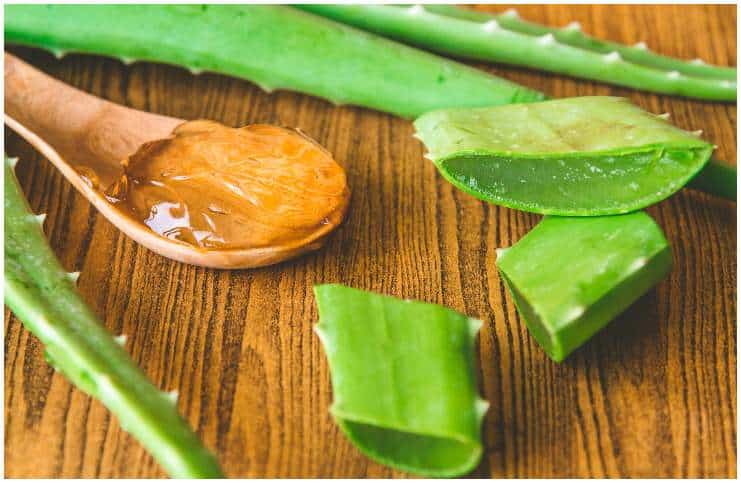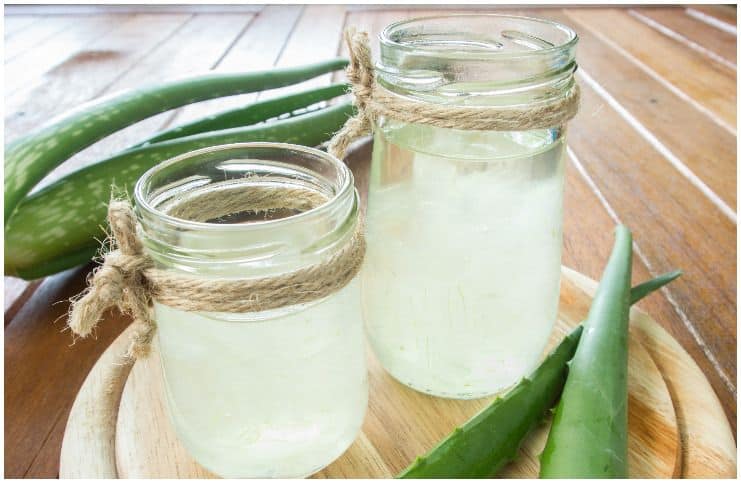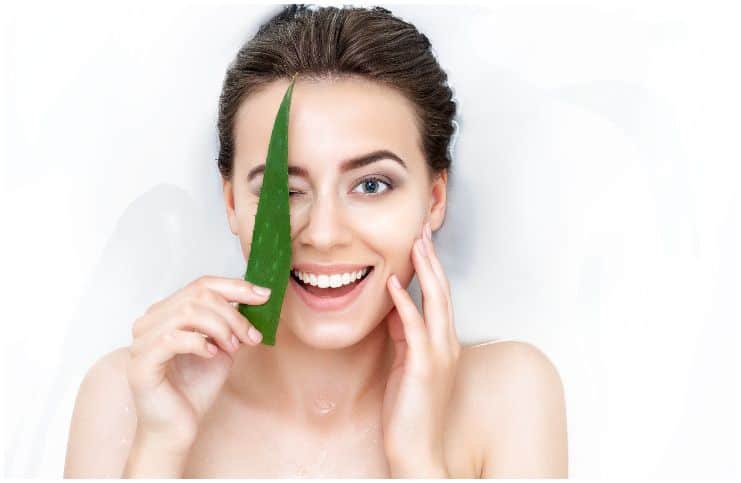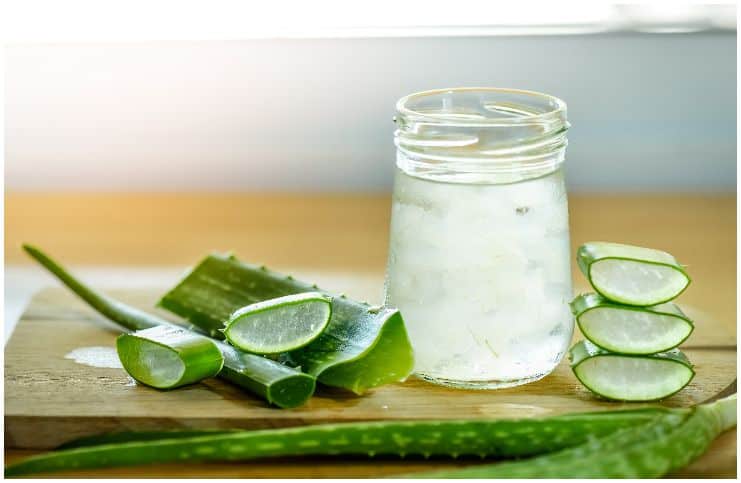Aloe vera, also called the ”plant of immortality,” is a perennial plant native to southern and tropical Africa, where it can reach 1 m height. At maturity, the leaves have a bluish-green hue (if they are kept in shadow). If the plants are kept in the sun, their leaves turn into light green. Its rich flowers are red.
The plant cannot live in low temperatures or in frost conditions. Watering should be moderate, only when the soil is dry at the roots.
Excess water, especially in winter, can destroy the plant. Airing the spaces where the plants are kept is also important, but be aware of drafts during winter.
Chemical composition
Vitamins: vitamin A – fights free radicals; vitamins B1, B2, B3, B6, B9 – very effective in detoxifying the body, anemia or deficiencies; vitamins C and E – extremely important in stabilizing the cell membrane or boost the immune system.
Minerals: calcium, phosphorus, potassium, iron, sodium, chloride, manganese, magnesium, copper, chromium, zinc, etc.
Laxatives: it contains 12 anthraquinone, which provides an analgesic, antibacterial, antifungal and antiviral effect (aloin, aloe acid, aloe-emodin, etc.)
Amino acids – proteins that provide energy. Aloe vera contains 7 of the 8 essential amino acids and 11 of the 14 nonessential amino acids that our body needs. Among the essential amino acids, there are isoleucine, valine, lysine, etc. Nonessential amino acids such as serine, proline, alanine are found in large quantities in the aloe vera plant.
Enzymes: cellulase, catalase, protease, lipase, etc.
Mono and polysaccharides: cellulose, glucose, mannose, acemannan.
Salicylic acid – with analgesic effect.
Steroids – with anti-inflammatory, antiseptic and analgesic effect.
Hormones – with anti-inflammatory and regenerative effect (auxin, gibberellins).
Biotherapy
The plant has therapeutic importance in human and veterinary medicine. The active principles contained serve as a digestive stimulant, purgative of the large intestine and bacteriostatic, especially in cases of Koch bacillus and staphylococci.
It is used for constipation, indigestion, anorexia, ulcer, flu, headaches, toothaches, sclerosis, asthenia, rheumatism, wounds, dermatitis, burns, ulcerations, etc.
Internal use
Put 1.5 kg of a chopped plant, aged 3-5 years, in a glass jar. The plant shouldn’t be watered for five days before use. Add 2.5 kg of honey and 3.5 l of red wine at a temperature of 14-18 °C. Place all these in the glass jar and keep it in a cool dark place for 5 days.
For the first 7 days of treatment take 1 teaspoon three times a day, 1 hour before meals. The minimum duration of the cure is three weeks or a month.
It is recommended in treating the following conditions: ulcer, flu, angina, tooth problems, mastoid, eczema, asthma, sclerosis, rheumatism, alcoholism, and nervous fatigue. Very important! Meat, dairy, eggs, and antibiotics are to be excluded from the diet during the treatment period.
Aloe Vera juice – immune fortifying:
Ingredients:
- 100 ml fresh juice;
- 500 grams of walnuts;
- 300 gr honey;
- lemon juice (4 lemons).
Mix all the ingredients until they homogenize. Take a teaspoon 3 times a day, 30 minutes before meals.
Benefits for skin
Aloe is a rich source of vitamins and minerals and it does wonders for the skin, being used in many cosmetic products against herpes, skin irritations, and cuts that can occur after shaving. As it doesn’t contain chemicals, it is an excellent natural and delicate cleanser (for cheeks and around the eyes, where the skin is very sensitive).
Benefits for burns
For small burns, break a thick leaf, remove the gel inside it and apply it on the burn once or twice daily. This plant should be used only for minor burns.
Benefits for hair
This plant is a humectant, meaning that it draws moisture from the air and keeps the hair well hydrated. Using daily, it will reduce thinning and rejuvenate the hair follicles. Furthermore, it can relieve scalp irritation and itchiness due to the fact that it has strong antipruritic properties. A gel from this plant can be used in place of your regular conditioner, to receive these benefits.
Benefits for diabetes
Supplementation with this plant may help improve HbA1c levels in patients with type 2 diabetes mellitus. Two doses of a juice from this plant or 5-15 ml, it can lower your sugar blood levels notably.
Weight loss
Consuming aloe vera juice may result in weight loss due to its strong laxative effect. It forces food out of the colon faster, improving digestion, preventing constipation, and detoxifying the physical body.
Side effects of aloe vera are minor. However, knowledge of its potential side effects is advisable:
- When given drugs for internal use, the urine can be colored in red, also abdominal pain and cramps can occur. These symptoms are specific when using products containing anthraquinones.
- In some cases, mild allergic reactions were reported (itching and rash).
- Sometimes, the juice from this plant may contain quantities of laxative substances, due to improper processing. Latex has laxative effects and its excess causes electrolyte imbalances. In addition, latex contained in aloe can cause severe diarrhea and intestinal cramps.
- Using the latex in its composition is not recommended for people suffering from irritable bowel syndrome, gastrointestinal disease, colitis, intestinal obstruction, diverticulitis, appendicitis, hemorrhoids, ulcers or stomach pain.
- Avoid internal administration of the plant in any form to children.
- Oral steroids, digoxin, diuretics and other medicines used to treat arrhythmias should be avoided when taking this plant.
- Sometimes it lowers the level of electrolytes in the body.
Sources https://www.ncbi.nlm.nih.gov/pmc/articles/PMC2763764/ https://www.sciencedirect.com/topics/medicine-and-dentistry/aloe-vera






Aloe vera is also known as Aloe barbadensis miller. Aloe aborescens is not Aloe vera, not Aloe barbadensis. Aloe aborescens grows very tall, 9′ and taller, and just as wide. Arborescens means “tree-like”.Very different plants.